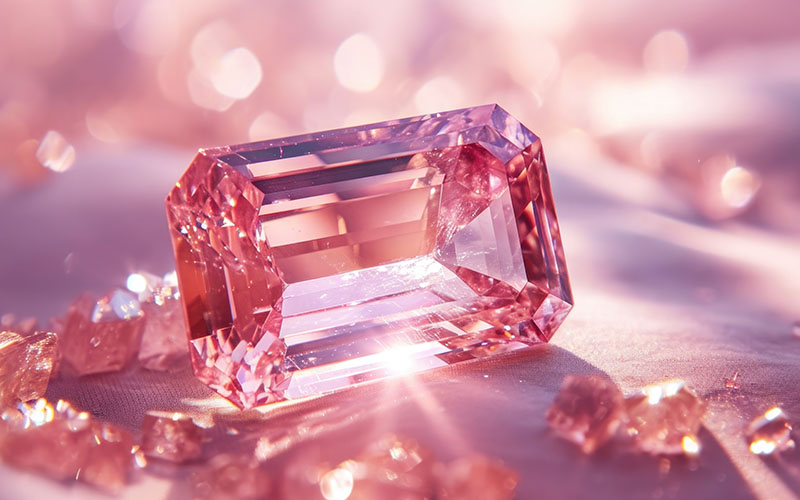Emeralds, with their captivating green hue, have been cherished for thousands of years as one of the world’s most popular gemstones. These stunning gems are known for their vibrant color, unique clarity, and remarkable durability. From their formation within the Earth to their rich history and cultural significance, emeralds have captivated the hearts of gemstone enthusiasts and collectors alike.

Formation and Properties
Emeralds are a variety of the mineral beryl, which is composed of beryllium aluminum cyclosilicate. The formation of emeralds occurs in hydrothermal veins, where hot water carrying minerals and elements flows through cracks in the Earth’s crust. This process takes place over millions of years, as the beryl crystals slowly grow and develop. The presence of chromium and vanadium during the formation gives emeralds their distinctive green color and properties.

One of the most remarkable properties of emeralds is their exceptional hardness, ranking 7.5 to 8 on the Mohs scale. This makes them highly resistant to scratches and damage making them suitable for everyday wear. To enhance their durability and clarity, they’re often treated with oils or resins – a little TLC for these precious gems! However, emeralds are also known for their brittleness, which means they can be prone to cracking or chipping if not handled with care.

Appearance and Colors
Emeralds are renowned for their mesmerizing green color, which ranges from a light, almost transparent green to a deep, intense green. The most valuable emeralds exhibit a vivid, saturated green hue with a slight bluish undertone. The intensity and hue of an emerald’s color depend on various factors, including the presence of trace elements and the quality of the stone. The most desirable emeralds exhibit a vivid, pure green color with a high degree of transparency. The color intensity and tone of an emerald play a significant role in determining its value, with the most prized stones being those with a pure, vibrant green color.

Inclusions, or internal flaws, are common in emeralds and are often referred to as “jardin,” the French word for garden. These inclusions are considered part of the stone’s character and can create a unique and desirable appearance known as the “emerald garden.” Those delightful internal inclusions add an extra layer of charm. However, too many inclusions can affect the transparency and overall quality of the gem.

History, Myths, and Legends
Emeralds have a rich history dating back over 4,000 years. Ancient civilizations, such as the Egyptians, Greeks, and Romans, revered emeralds for their beauty and believed they possessed mystical powers. Cleopatra, the legendary Egyptian queen, was particularly fond of emeralds and used them in her jewelry and as gifts to foreign dignitaries. Emeralds adorned the crowns of royalty and were believed to possess mystical powers, from enhancing memory to revealing truths.

In various cultures, emeralds were associated with fertility, rebirth, and love. The Incas of South America considered emeralds to be sacred and believed they were a gift from the gods. The Spanish conquistadors were so captivated by the emeralds they discovered in the New World that they sent vast quantities back to Europe, fueling the gem’s popularity among European royalty. In modern times “The Emerald City” was celebrated in the classic film The Wizard Of Oz, and has also grown into a nickname for Seattle, Washington.

Countries of Origin
Emeralds are found in several countries around the world, with each region producing stones of unique characteristics. Colombia is widely regarded as the primary source of the finest emeralds, known for their exceptional color and transparency. They often contain 3 phase inclusions, liquid, gas and a solid. Other significant producers include Zambia, Brazil, Afghanistan, and Zimbabwe. Each origin has its own distinct color variations and qualities, making emeralds from different regions highly sought after by collectors and connoisseurs.

Emeralds are mined using both open-pit and underground mining techniques. In open-pit mining, layers of soil and rock are removed to expose the emerald-bearing veins. In underground mining, tunnels are dug to reach deeper deposits. Miners carefully extract emeralds by hand to avoid damaging the fragile crystals.

In recent years, the demand for emeralds has been steadily increasing. This surge in popularity can be attributed to the gemstone’s timeless beauty, rarity, and the growing appreciation for ethically sourced gemstones.

One of “The Big Three”
Did you know that emeralds are one of the “big three” colored gemstones, alongside rubies and sapphires? They are also the birthstone for the month of May and are often chosen as an engagement ring stone due to their symbolism of love and fidelity. Emeralds have long been associated with various healing properties and are believed to promote emotional balance, enhance intuition, and bring prosperity.
In conclusion, emeralds are truly a gemstone of unparalleled beauty and allure. From their formation deep within the Earth to their rich history and cultural significance, emeralds continue to captivate and enchant people around the world. Whether admired for their vibrant green color, their association with legends and myths, or their healing properties, emeralds remain a timeless symbol of elegance and sophistication.





